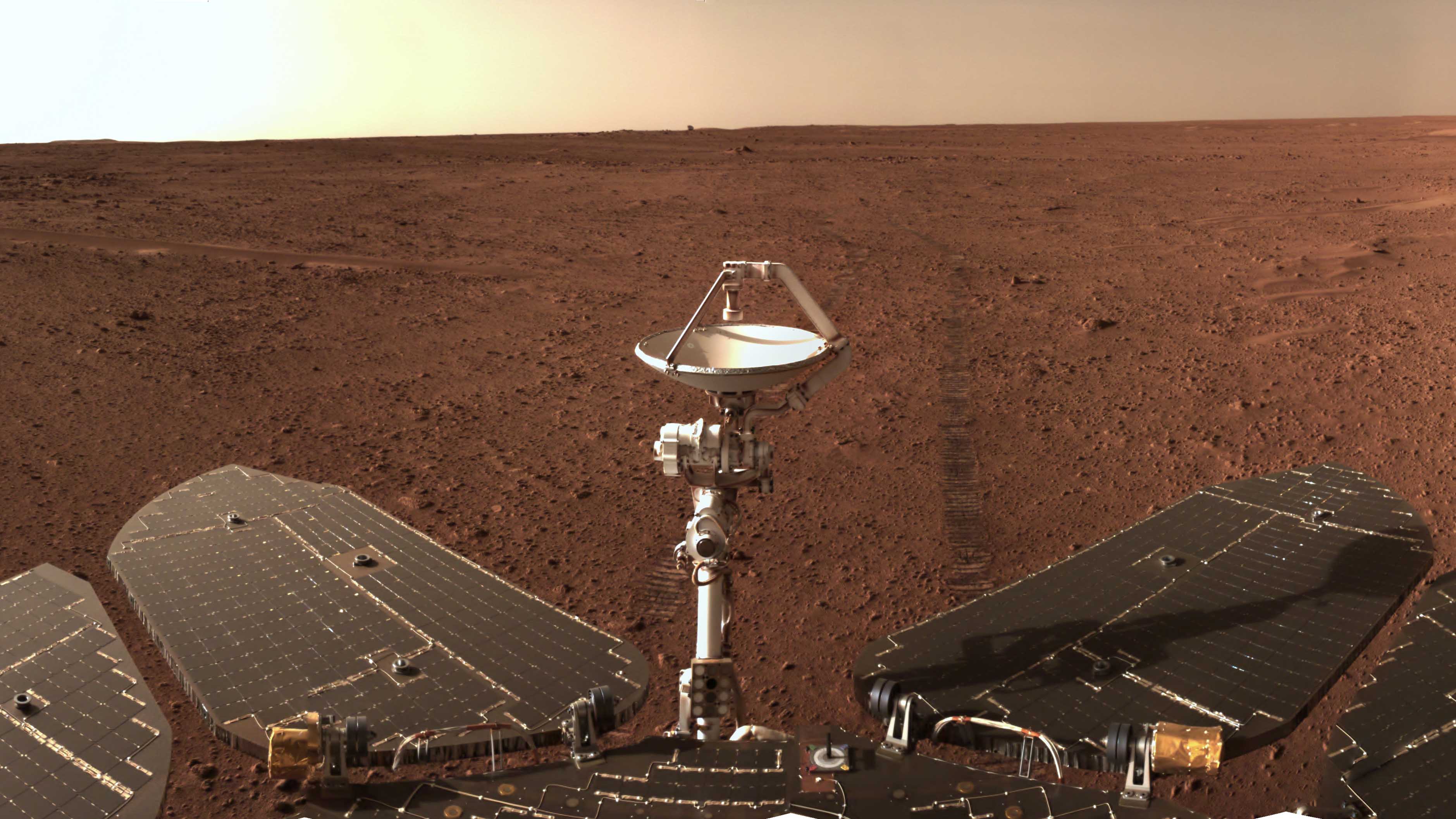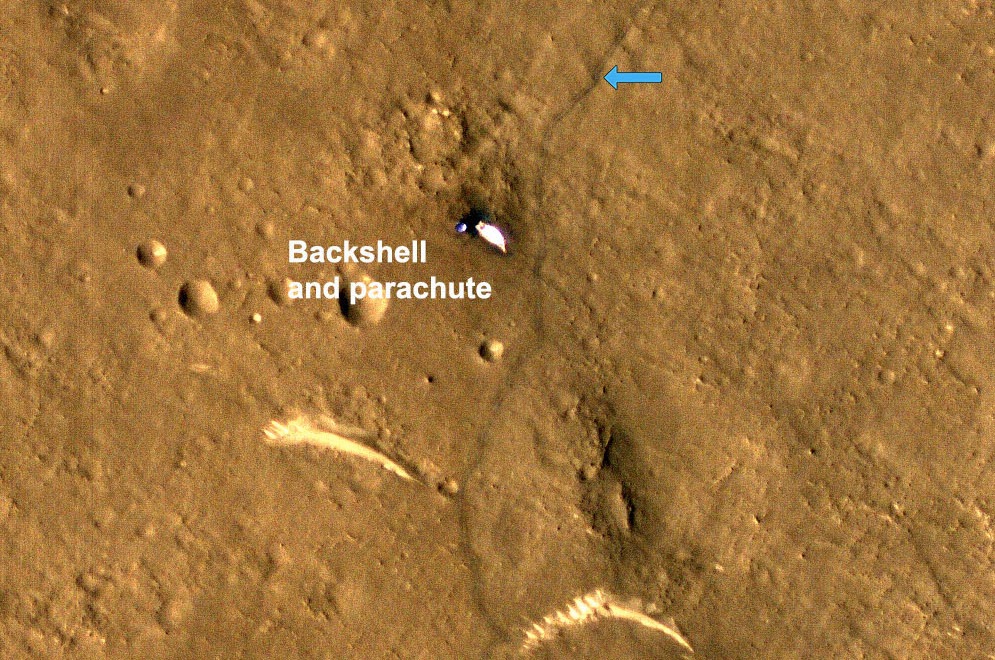China plans to return Mars samples to Earth in 2031: report
That's two years earlier than NASA and ESA plan to pull it off.

China plans to haul Mars samples to Earth in 2031, two years before NASA and the European Space Agency (ESA) aim to do so, according to media reports.
The target date was announced in a Monday (June 20) presentation by Sun Zezhou, chief designer of the Tianwen 1 Mars orbiter and rover mission that arrived at the Red Planet in February 2021, according to SpaceNews.
Zezhou's presentation, reportedly given at a Nanjing University seminar, says China is targeting a two-launch mission with liftoff in late 2028 and a sample return to Earth in July 2031, the report said.
Related: Amazing panorama shows China's Chang'e 5 landing site on the moon (photos)
"The complex, multi-launch mission will have simpler architecture in comparison with the joint NASA-ESA project, with a single Mars landing and no rovers sampling different sites," SpaceNews wrote.
NASA recently asked for public input on its joint sample return plans, after the agency decided to develop a second Mars lander due to the mass requirements of the mission. Adding that second lander pushes the arrival of Mars samples on Earth back to 2033, from 2031.
The NASA-ESA campaign will haul home samples collected by the American space agency's Perseverance rover, which has been exploring the 28-mile-wide (45 kilometers) Jezero Crater since February 2021. The project will employ a European-built "fetch" rover to grab the samples and place them aboard an American-made Mars ascent vehicle (MAV). The MAV will launch the sample container into Mars orbit, where it will be snagged by a European Earth return orbiter.
Get the Space.com Newsletter
Breaking space news, the latest updates on rocket launches, skywatching events and more!

China's effort will be more streamlined, with dirt and rock collected from one small area via "surface sampling, drilling and mobile intelligent sampling, potentially using a four-legged robot," SpaceNews wrote.
China already has experience in delivering samples from the moon. The nation's Chang'e 5 mission touched down on the moon in December 2020 and shortly after delivered to Earth the first lunar samples since the Soviet Union's Luna 24 did so in 1976.
And China already has considerable Mars experience thanks to Tianwen 1, which launched in July 2020 and arrived at the Red Planet in February 2021. Tianwen 1 consists of an orbiter as well as a lander and a rover, called Zhurong; this latter duo touched down in May 2021.
The Tianwen 1 orbiter and Zhurong are both still going strong. The rover entered a planned hibernation in May of this year to attempt to outlast the bitterly cold Red Planet winter.
In 2021, both NASA officials and members of the administration of President Joe Biden warned that Chinese exploration may pose a threat to American interests.
During a May 2021 virtual Senate hearing, for example, NASA chief Bill Nelson twice showed a printed-out picture of Zhurong on Mars, saying the Chinese program is "adding a new element about whether we want to be serious" about NASA sending humans back to the moon. NASA has a program, Artemis, that aims to put boots on the lunar surface in 2025 or so.
Scientifically, however, China has been working to increase its visibility in the space community. It released a high-resolution global map of the moon earlier in June, and in May released plans for its Tianwen 2 asteroid sample return mission, which is scheduled to launch in 2025.
Follow Elizabeth Howell on Twitter @howellspace. Follow us on Twitter @Spacedotcom and on Facebook.
Join our Space Forums to keep talking space on the latest missions, night sky and more! And if you have a news tip, correction or comment, let us know at: community@space.com.

Elizabeth Howell (she/her), Ph.D., was a staff writer in the spaceflight channel between 2022 and 2024 specializing in Canadian space news. She was contributing writer for Space.com for 10 years from 2012 to 2024. Elizabeth's reporting includes multiple exclusives with the White House, leading world coverage about a lost-and-found space tomato on the International Space Station, witnessing five human spaceflight launches on two continents, flying parabolic, working inside a spacesuit, and participating in a simulated Mars mission. Her latest book, "Why Am I Taller?" (ECW Press, 2022) is co-written with astronaut Dave Williams.









